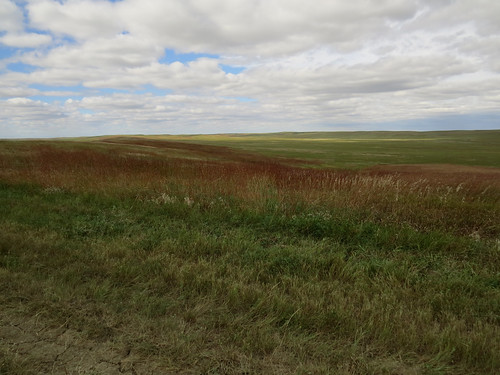
When a new species is discovered on the planet, people usually imagine a discovery process that is dangerous and remote in location. However, one scientist didn’t have to venture far from home to learn about a few new discoveries that has the science community spinning about a native grassland ecosystem in South Dakota.
Arachnid hunter Brian Patrick, an assistant professor of biology at Dakota Wesleyan University, is looking for creatures that are usually overlooked in the grasslands, and his work is making a mark in the scientific world. With help from partners like the South Dakota Department of Game, Fish and Parks and the University of South Dakota Biomedical Research Infrastructure Network, Patrick works with the Nebraska National Forest to conduct research on arachnids on the Fort Pierre National Grassland.
Two summers ago, Patrick discovered Theridion pierre, a tiny yellowish spider approximately one millimeter long. Recently he also unveiled two other dwarf spiders from genera Ceraticelus and Mermessus. Patrick hopes to have them named after his wife, Traci, and their daughter, Thea.
What exactly does it take to catch a tiny spider amidst and below the long grasses of the Fort Pierre National Grassland?
On four different fields in the Fort Pierre National Grassland, Patrick and his crew used four trapping methods to collect unsuspecting invertebrates: pitfall traps which are cups placed into holes in the ground for bugs to fall into; ramp traps which are Ziploc containers in the ground with ramps leading into them; net-sweeping of vegetation; and sifting through dead grass and organic matter. Theridion pierre was frequently caught in these traps, while the other two species Patrick hopes to name were a little more scarce.
Once captured, the tricky part begins – identifying these small spiders by their eyes, leg spines, and even genitalia, all key identifiers that distinguish one species from another.
“I am not surprised that I am finding new species living in the Fort Pierre National Grassland,” said Patrick. “This particular type of northern mixed-grass prairie hasn’t been heavily sampled, and the protection and management of the land by the USDA Forest Service has helped maintain the integrity of this biologically unique ecosystem.”
Next summer, Patrick will continue his research on the grasslands. Aside from the Theridion pierre, Ceraticelus and Mermessus species, he believes he’s found an additional spider species during his studies. After the grasslands, he plans to head to northeast South Dakota to look for more spiders hiding out in the wetlands, prairie and tree belts.

